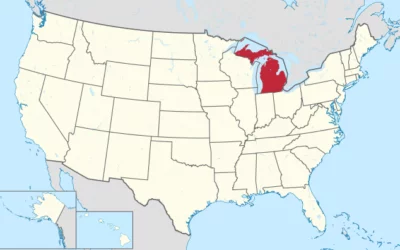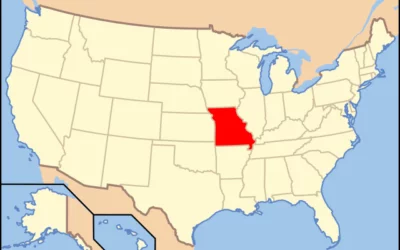Georgia’s Incarceration Reality
Georgia’s incarceration rates are through the roof! With 881 per 100,000 residents behind bars, it’s a larger share than in any democratic country. This high rate feeds mass incarceration and puts a strain on the state’s resources. Ever heard of private probation? It’s a system that dings folks for low-level offenses, adding fuel to the fire. Now, imagine the impact on families and communities. It’s like a chain reaction that keeps growing. Efforts to support Georgians re-entering society are crucial. As daunting as the prison system seems, there’s hope. Expanding healthcare access can help Georgians re-entering society find a footing. Let’s take a closer look at the nuts and bolts of this crisis.

Historical Growth of Incarceration Rates
Over the years, the surge in incarceration rates in Georgia has been staggering. With 881 of every 100,000 residents locked up, the state surpasses any other democratic nation. The system sees an influx of approximately 236,000 individuals annually, boosting local jail populations. Mandatory sentencing laws play a huge role in this. They often prolong sentences, crowding the prison system and limiting parole options. On the flip side, the financial strain on families is immense. From hefty fines to sky-high communication costs, they bear the brunt. For more on Georgia’s justice system, consider changes highlighted in DeKalb’s traffic court here.
Disparities Affecting People of Color
Examining the inequalities impacting communities of color reveals a stark reality in Georgia. The prison system disproportionately affects these communities, with Black individuals facing higher incarceration rates. Systemic biases within the justice system play a role. These biases lead to more severe sentencing and fewer parole opportunities. The economic implications are also significant, affecting families and communities. Incarceration disrupts family structures, often leading to financial and social challenges. Moreover, the stigma associated with being incarcerated makes reintegration difficult, perpetuating cycles of disadvantage. Addressing these disparities is essential for promoting equality within Georgia’s justice framework.

Impact of Mandatory Minimum Sentencing Laws
The effects of mandatory sentencing laws on Georgia incarceration are profound. By imposing fixed penalties, these laws inflate Georgia’s prison system population, leaving little room for alternative sentences or parole. The financial implications extend beyond prisons, impacting the Georgia budget significantly. The exorbitant costs associated with maintaining such incarceration rates can strain state resources and redirect funds from essential services. Moreover, these laws exacerbate disparities, especially for communities of color. The private probation industry further complicates matters, adding financial burdens on minor offenders. This intricate web of factors underscores the need for reform in Georgia’s approach to criminal justice. For insights, visit The Outline.
Economic Consequences of High Incarceration Rates
Exploring the financial impact of Georgia’s incarceration reveals a burdensome reality. The Georgia budget feels the weight of maintaining swelling prison numbers, often diverting funds from other essential services. Families of the incarcerated face substantial financial challenges, from communication costs to legal fees. Employment opportunities vanish, causing ripple effects throughout communities. Georgia prisons inadvertently fuel a cycle of economic disadvantage, where the absence of workers leads to increased welfare needs. Add in the fees from the private probation system, and it’s a recipe for economic strain. This tangled web calls for urgent reform to alleviate the financial load.

The Role of Private Probation
Addressing the influence of private probation in Georgia highlights its role in exacerbating issues within the prison system. This setup often turns minor offenses into financial sinkholes, pushing individuals deeper into the justice system. With high fees, many find themselves trapped in a cycle of debt and incarceration in Georgia prisons. It’s like a revolving door that never stops spinning. The focus should be on reducing these financial burdens and finding fair solutions. By rethinking this approach, there might be a chance to ease pressures on those already struggling and help communities breathe a little easier.
Supporting Georgians Re-Entering Society
Helping Georgians transition back after time served involves tackling many challenges. Addressing healthcare for these individuals is crucial, especially since they often face issues like chronic illnesses. Expanding Medicaid could significantly aid in this effort, reducing the risk of re-incarceration. Moreover, the burden of private probation fees compounds the difficulty of re-integrating. A fairer system could ease financial stress. The impact of Georgia’s prisons on families is also profound, disrupting lives and perpetuating cycles of hardship. For instance, the Georgia legislation document discusses potential reforms aimed at improving outcomes for these individuals and their communities.
Social Impacts of Incarceration on Families and Communities
The effects of incarceration in Georgia ripple through families and neighborhoods, shaking the foundation of both. When someone is sent to Georgia prisons, it’s like removing a piece from a fragile puzzle. Families often face emotional and financial hurdles, struggling to stay connected with loved ones. Kids especially feel this absence, sometimes leading to behavioral issues in school.

Communities bear the brunt too, losing valuable contributors and witnessing increased poverty cycles. The stigma of having an incarcerated family member can be a heavy cloak. Lack of resources and support makes reintegration challenging, perpetuating a cycle of hardship. Every puzzle piece counts, right?




0 Comments